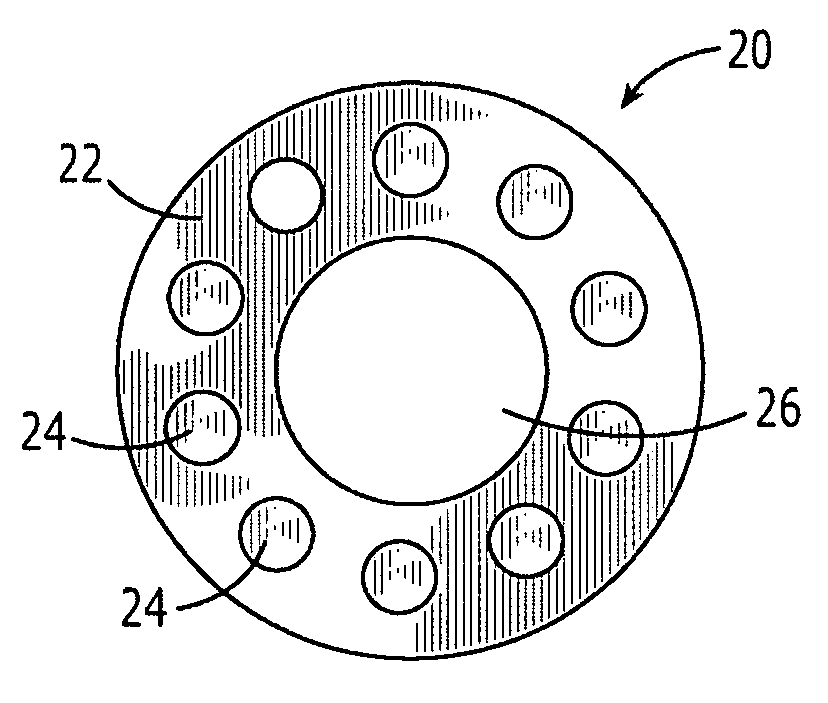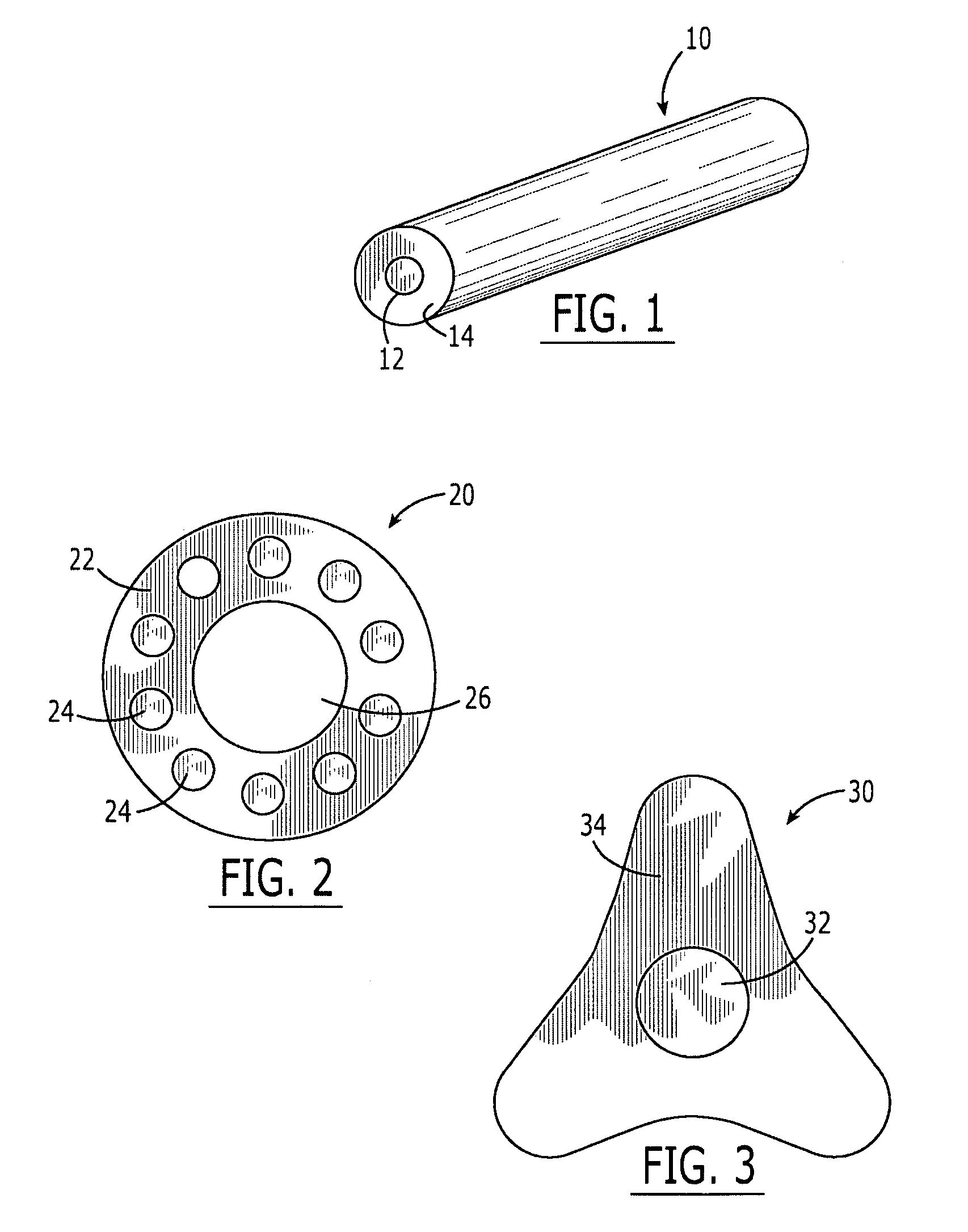Multicomponent fiber with polyarylene sulfide component
a polyarylene sulfide, fiber technology, applied in the direction of yarn, textiles, textiles, etc., can solve the problems of poor mechanical properties of pps fibers, insufficient tensile strength of pps fibers for many applications, and difficulty in the production of pps fibers, etc., to achieve the effect of reducing costs
- Summary
- Abstract
- Description
- Claims
- Application Information
AI Technical Summary
Benefits of technology
Problems solved by technology
Method used
Image
Examples
example 1
100% PPS fiber
[0065]Crystallized Fortron 0309 PPS from Ticona was charged into two drying hoppers and dried for 8 hours at 280° F. The dried polymer was fed from the hoppers into two extruders, running at temperatures from 280° C. at the inlet to 305° C. at the outlet. The polymer was extruded into two gear pumps, which fed the two polymer streams into a bicomponent spin pack designed to make fibers with a sheath / core arrangement, with polymer from one extruder in the sheath of each fiber, and polymer from the other extruder in each fiber's core. The fibers were solidified in an air stream at 12.5° C. and mechanically attenuated by a pair of godets running at 992 meters per minute and wound on a bobbin at 1000 meters / minute. These fibers were further mechanically drawn on unheated rolls through a water bath at 165° F., with an overall draw ratio of 2.65:1. These fibers were judged suitable for use in baghouse filters, but the cost was prohibitive.
example 2
40% PPS / 60% PET sheath / core fiber
[0066]Crystallized Fortron 0309 PPS from Ticona and 0.55 i.v. PET from NanYa Plastics were separately charged into two drying hoppers and dried for 8 hours at 280° F. The dried polymers were separately fed from the hoppers into two extruders, running at temperatures from 280° C. at the inlet to 295° C. at the outlet. The polymer was extruded into two gear pumps, which fed the two polymer streams into a bicomponent spin pack designed to make fibers with a sheath / core arrangement, with the PPS in the sheath of each fiber, and the PET in each fiber's core. The fibers were solidified in an air stream at 15° C. and mechanically attenuated by a pair of godets running at 842 meters per minute and wound on a bobbin at 865 meters / minute. These fibers were further mechanically drawn on unheated rolls through a water bath at 165° F., with an overall draw ratio of 2.72:1. These fibers were judged suitable for use in baghouse filters, and because of the reduced c...
PUM
| Property | Measurement | Unit |
|---|---|---|
| mol % | aaaaa | aaaaa |
| mol % | aaaaa | aaaaa |
| mol % | aaaaa | aaaaa |
Abstract
Description
Claims
Application Information
 Login to View More
Login to View More - R&D
- Intellectual Property
- Life Sciences
- Materials
- Tech Scout
- Unparalleled Data Quality
- Higher Quality Content
- 60% Fewer Hallucinations
Browse by: Latest US Patents, China's latest patents, Technical Efficacy Thesaurus, Application Domain, Technology Topic, Popular Technical Reports.
© 2025 PatSnap. All rights reserved.Legal|Privacy policy|Modern Slavery Act Transparency Statement|Sitemap|About US| Contact US: help@patsnap.com


